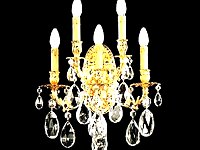IP TESTING
Luminaires for exterior use will be affected
by different environmental aspects, for
example heavy rainfall or dust or dirt
particles being blown around by the wind.
To prevent these influences from having an
impact on the functionality of the luminaire,
an IP rating is being mentioned for each
type of luminaire. At Deltalight, all our
luminaires are being tested according to
the specific standards in order to give them
the correct IP rating according to the final
application purpose.
IP testing (solid particles)
· IP testing according to IEC 60598.
The standard specifies all parameters
and circumstances to deliver correct
test results, depending on the degree of
protection against solid particles. The
first digit of the IP rating tells the
protection rate against solid objects of
the following diameters:
· >50mm: the luminaire can not be
entered with a hand or similar for
example
· >12,5mm: the luminaire can not be
entered with a finger or similar for
example
· >2,5mm: the luminaire can not be
entered with tools or similar for
example
· >1mm: the luminaire can not be
entered with a screw or thin wires for
example
IP testing (fluid)
· IP testing according to IEC 60598. The
standard specifies all parameters and
circumstances to deliver correct test
results, as there are multiple degrees of
protection depending of the final purpose
of the luminaire. Simulations can be done
for rain, over spray water to submersion,
according to the specific type of
installation.
· Rain (IP X4)
· Spray water (IP X5)
· Splash water (IP X6)
· Submersion (IP X7)
IK TESTING
Next to IP rating, a luminaire can also
be influenced by certain large or smaller
impacts, for example collision with
people, bicycles or cars.
Different types of collision can be
tested according to IEC 62262, this
standard specifies all parameters and
circumstances to deliver correct
test results, depending on the degree of
protection against external mechanical
impacts. A hammer is being dropped
into the luminaire to create impact.
The weight of the pendulum and the
height from where it is being dropped
can vary to measure different levels
of impact. The higher the digit of the
IKXX value, the higher the impact it can
absorb without preventing the luminaire
from losing its protective function.
FILIFORM CORROSION TESTING
Luminaires for exterior use are more
exposed to harsh weather conditions
and need to be resistant to corrosion.
To test coated luminaires on how they
react to exterior conditions we test them
according to the filiform corrosion test
(ref. ISO 9227): the product is being
scratched and undergoes a corrosive
attack by dripping hydrochloric acid
onto its surface. Afterwards the product
is being put into the test cabinet for
1000h at 40°C and a relative humidity
of 82%. After this test; results are being
checked according to ISO 4628-10.
CLIMATE TESTING
Over time, a luminaire will be influenced
by the environment it is installed in, be it
by alternating temperatures or changing
levels of humidity. By simulating the
environmental influences in a climate test
chamber, we are able to reproduce the
effect on our luminaires but also check
extreme stress parameters like rapidly
changing temperatures. It allows us to
ensure the correct material choice for
different types of luminaires and improves
the reliability and quality of our products.
COMPONENT TESTING
All luminaires exist out of multiple
components, therefor a luminaire is only
as qualitative as its weakest component.
Quality testing on component level is a
constant and essential topic at Deltalight
which requires a high level of know-how
as all components exist out of different
materials, can be electronic or electric and
are being used in different circumstances.
Looking for the best quality in both
components and manufacturers requires a
strict policy in testing and supplier selection.
ELECTROMAGNETIC
COMPATIBILITY TESTING
EMC testing according to IEC 61547, IEC
55015, IEC 61000-3-2, IEC 61000-3-3
Electrical products can emit
electromagnetic waves. When releasing
electrical equipment for the EU market,
it has to apply to the norms set by EU
directives. These tests are done to make
sure that there will be no mutual interference
from the luminaire towards its environment in
order to not hinder the correct operation of
the equipment.
22
WE PRODUCE — Process







